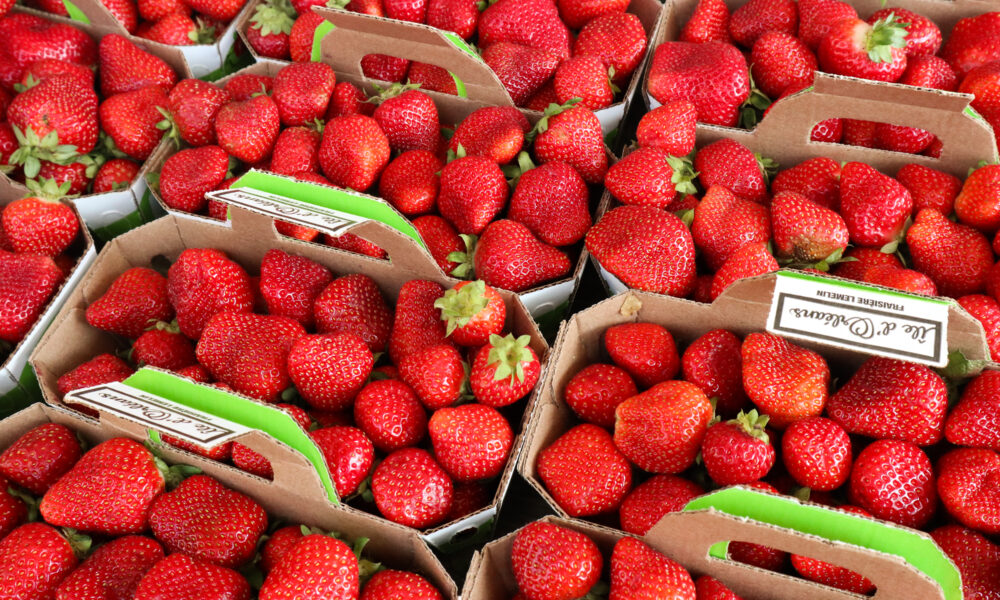Over four million Canadians contract food poisoning every year, making it a relatively common—although intensely unpleasant—ailment. The most commonly identified culprits are undercooked red meat, poultry products, and seafood. However, fresh produce is another source that often gets overlooked. As the general public increasingly recognizes fruits and vegetables as integral parts of a healthy diet, our overall consumption of fresh produce is rising, resulting in increased bacterial outbreaks in the produce supply chain.
In a recent paper, Pierre-Luc Longchamps, a PhD student at McGill’s Department of Food Science and Agricultural Chemistry, and his colleagues studied how bacterial contamination of fresh produce at each step of the supply chain, along with bacterial dormancy, allows bacteria to entrench itself into our produce.
Typically, bacteria that cause food poisoning, such as E. Coli, Salmonella, and Listeria, are not naturally present in fresh fruits and vegetables. Instead, contamination occurs through contact with wildlife before harvesting, through human handling, and from unsafe food storage conditions during processing. This can happen at various stages of production, from contaminated surface water runoff on agricultural land or manure from livestock coming in contact with produce, to the final stages of production if produce is packed in a contaminated environment.
“A major source [of infection] is from a handler, so anyone who’s picking, cleaning, cutting, or processing the produce. If they themselves are sick, they can often spread it to the food,” Longchamps said in an interview with The Tribune.
While people usually cook animal products such as meat and poultry before consumption, they often consume fresh produce raw, making contaminated produce more likely to impact us since cooking serves as an intermediate step to kill bacteria. Bacteria in fresh produce can also evade detection by entering a dormant phase—an adaptive state that makes them harder to measure.
Bacterial dormancy describes a period where bacteria stop growing and replicating in response to a stressor, allowing them to survive in harsh conditions. This is problematic, since current detection methods involve culturing bacteria on selective growth media.
“[Depending on their dormancy state], bacteria have an intact cell membrane and still [perform cellular] respiration, but if you put them on normal growth media, like a petri dish, they won’t grow [….] However, when ingested, we know that bacteria can revert back to their normal growing states and still cause infections,” Longchamps added.
Notably, bacteria culturing often uses selective growth media, a controlled environment that only allows a specific bacterial strain to grow. This often prevents dormant bacteria from growing even in their own selective environment due to their dormant state, making detection even more difficult.
PCR testing, a method used to detect COVID-19 infections during the pandemic, is becoming a credible alternative to current culture testing for bacteria detection in fresh produce. This method could help detect the presence of bacteria even when they are dormant. However, it requires expensive equipment and highly trained laboratory professionals, and is prone to false positives—a test result which incorrectly indicates the presence of a condition.
In the past few decades, reports of bacterial outbreaks in fresh produce have been on the rise, which is likely because of increased testing and the prevalence of prepackaged mixed salads.
“For a long time, it was thought that vegetables were relatively safe, and people were more concerned with meats, but as we became better at keeping our meat clean, there’s a lot more [testing] being done on vegetables [….] The rise in popularity of pre-bagged salads [also explains the rise in outbreaks] since you end up with vegetables being mixed together, and if a single vegetable is contaminated, then you end up contaminating everything else,” Longchamps explained. While governments are implementing more preventive measures to prevent bacterial outbreaks and scientists are studying novel detection methods, consumers can also take a few measures: Actively checking produce recalls and thoroughly rinsing fruits and vegetables with running water.






